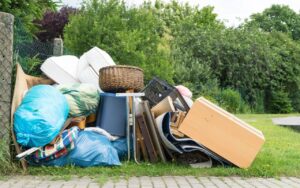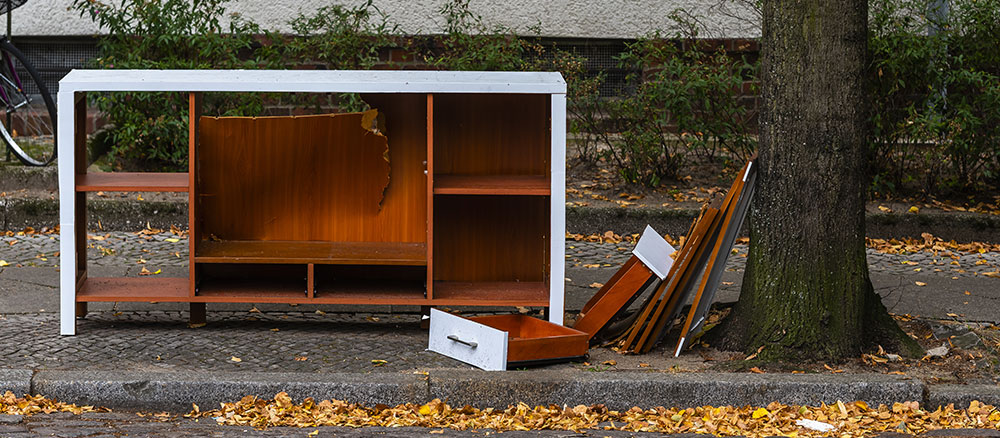May 2, 2025
The Role of Estate Cleanouts in Property Management
Managing a property—whether residential, commercial, or inherited—comes with a wide array of responsibilities. One crucial yet often overlooked aspect of effective property management is estate cleanouts. These cleanouts play a significant role in maintaining property value, ensuring tenant satisfaction, and preparing spaces for sale, rental, or repurposing. Though the term “estate cleanout” might evoke images of clearing out belongings after a death, its importance extends well beyond that. In reality, estate cleanouts are an integral part of the property management process, regardless of the circumstances.
Understanding Estate Cleanouts

Estate cleanouts involve the removal of personal belongings, furniture, appliances, and miscellaneous items from a property. This task typically arises after major life events such as a death in the family, a foreclosure, eviction, downsizing, or the sale of a home. For property managers, real estate agents, and landlords, organizing and executing a cleanout is often the first step before a space can be transitioned to its next phase.
While estate cleanouts can be emotionally charged for families, for professionals in property management, they are a practical necessity. The process ensures that a property is left in a condition that is safe, clean, and market-ready. Whether the goal is to re-rent a unit quickly or stage a house for sale, an effective cleanout can make a significant difference in how efficiently the property turns over. For tips on streamlining the process or hiring help, have a peek here for more resources and guidance.
A Key Component of Property Turnover
Estate cleanouts serve as the foundation for the turnover process in property management. Before any cosmetic or structural improvements can be made—such as repainting, repairing, or staging—the property must first be emptied. This is especially important when dealing with homes or apartments that have been occupied for many years. Over time, properties can accumulate large amounts of personal possessions, debris, or items that no longer have value or utility.
By clearing out these items, property managers create a blank canvas that enables potential buyers or renters to envision themselves in the space. It also simplifies the job for cleaning crews, contractors, and inspectors who require easy access to the premises. A smooth, timely estate cleanout can accelerate the property turnover process, reducing vacancy periods and maintaining a consistent cash flow for owners.
Enhancing Property Value and Appeal
The condition in which a property is presented has a direct impact on its market value and appeal. A cluttered, disorganized home filled with outdated furniture or forgotten belongings can detract from its features and make it less attractive to potential tenants or buyers. On the other hand, a clean, cleared-out space not only looks better but also allows for better marketing photos, easier showings, and more accurate inspections.
Professional estate cleanout services often go hand-in-hand with deep cleaning, minor repairs, and staging—all of which collectively enhance the property’s visual and functional appeal. For property managers, this adds value by making listings more competitive in the market. Even for rental properties, a thorough cleanout signals to incoming tenants that the property has been well-maintained, setting the stage for a positive landlord-tenant relationship.
Managing the Emotional and Logistical Challenges
One of the more complex aspects of estate cleanouts is the emotional layer, especially when the process follows the loss of a loved one. Property managers working in residential spaces may find themselves navigating delicate family dynamics, with multiple heirs or stakeholders involved in decision-making. In these situations, clear communication and sensitivity are key.
From a logistical standpoint, estate cleanouts can be time-consuming and labor-intensive. Sorting through items, identifying valuables, coordinating donations or junk removal, and properly disposing of hazardous materials all require planning and effort. This is why many property managers opt to partner with professional cleanout services, who bring both efficiency and expertise to the process. These companies are often equipped to handle the emotional and physical demands of the job, easing the burden on both families and managers.

Legal and Environmental Considerations
Estate cleanouts must also be handled with attention to legal and environmental regulations. In cases involving evictions or foreclosures, there may be local laws governing how long a property manager must wait before removing belongings, and how those items must be stored or disposed of. Similarly, certain materials—like paint, electronics, or medical waste—require proper disposal methods to comply with environmental laws.
A well-conducted estate cleanout ensures that all items are managed responsibly and that the property remains in compliance with legal standards. This minimizes the risk of disputes, fines, or delays in re-leasing or selling the property. Property managers who stay informed and proactive in this regard protect not only their clients but also the long-term value of the properties they oversee.
More Details Before you even start looking for a furniture removal company, it’s important to understand exactly what you need removed. Are you clearing out a single room or an entire house? Do you have specialty items like antique furniture or large sectional sofas that require special handling? Are you on a tight schedule, or is this a flexible project? Defining the scope of your furniture removal project will help you narrow down your options and find companies that offer services aligned with your requirements.
Before you even start looking for a furniture removal company, it’s important to understand exactly what you need removed. Are you clearing out a single room or an entire house? Do you have specialty items like antique furniture or large sectional sofas that require special handling? Are you on a tight schedule, or is this a flexible project? Defining the scope of your furniture removal project will help you narrow down your options and find companies that offer services aligned with your requirements.
 Appliances are complex machines made of metal, plastic, glass, and various electronic components. While these materials may seem harmless at first glance, they can hide substances that are toxic or environmentally damaging. Older appliances, in particular, may contain elements that are now considered hazardous. For example, refrigerators and air conditioners often contain refrigerants like chlorofluorocarbons (CFCs) or hydrochlorofluorocarbons (HCFCs), which are potent greenhouse gases that deplete the ozone layer.
Appliances are complex machines made of metal, plastic, glass, and various electronic components. While these materials may seem harmless at first glance, they can hide substances that are toxic or environmentally damaging. Older appliances, in particular, may contain elements that are now considered hazardous. For example, refrigerators and air conditioners often contain refrigerants like chlorofluorocarbons (CFCs) or hydrochlorofluorocarbons (HCFCs), which are potent greenhouse gases that deplete the ozone layer. One of the challenges in appliance disposal is the general lack of public knowledge about hazardous materials. Many people still view old appliances as bulky waste rather than potential environmental hazards. Education plays a critical role in shifting this perspective. Communities can benefit from awareness campaigns, school programs, and public service announcements that inform residents about the risks and proper disposal practices.
One of the challenges in appliance disposal is the general lack of public knowledge about hazardous materials. Many people still view old appliances as bulky waste rather than potential environmental hazards. Education plays a critical role in shifting this perspective. Communities can benefit from awareness campaigns, school programs, and public service announcements that inform residents about the risks and proper disposal practices.